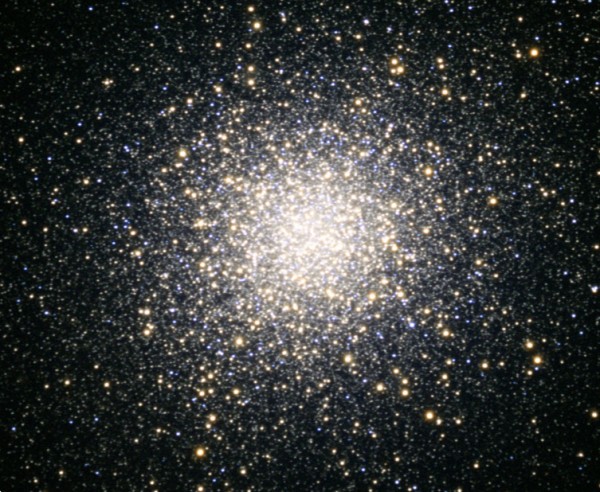4 Sky Events This Week: Summer Superstars, Milky Way Rising
The Great Hercules Cluster is one of the favorite deep sky targets for backyard stargazers using binoculars and telescopes. Credit: T. Bash, J. Fox, and A. Block/NOAO/AURA/NSF
As the waning moon moves across late night skies through the faint constellations of Capricornus and Pisces, some of the new season’s brightest stars take center stage.
Vega and Arcturus. On Monday, June 24 two of the brightest stars of the northern summer will bracket the skies after nightfall. Toward the high east will be the white star Vega, 25 light-years away from Earth. The orange-hued Arcturus, sitting 36 light-years away from Earth, will be visible in the southwest. Both are considered close neighbors to our sun, but are very different types of stars.
Vega shines so brightly because it is three times the size of our sun and produces 50 times as much light. The red giant Arcturus is 26 solar masses and pumps out 150 times more light.
Venus and Gemini. Look towards the low northwest horizon after sunset on Tuesday, June 25, to see Venus form a straight line with the Gemini constellation’s twin lead stars, Pollux and Castor. Venus is an easy naked-eye target, but binoculars will likely be needed to spy the two stars in the twilight glare. Mercury is even more of challenge, about six degrees below Venus—equal to about the width of three middle fingers at arm’s length.
Milky Way Rising. On the night of Friday, June 28—if you’re away from city light pollution—our home galaxy, the Milky Way will, arch across the eastern sky in the northern hemisphere. A striking spiral arm filled with millions of stars will sweep through the major constellations of the season: Starting in the northeast with Cassiopeia, up across the high east through Cygnus, and running down south into Sagittarius. Scanning through this celestial real estate with binoculars and backyard telescopes will reveal countless stellar treasures.
Great Hercules Cluster. Hanging high in the southwest evening skies on Sunday, June 30, the constellation Hercules—the strongman—will be easy to hunt down thanks to four stars that make up a keystone pattern. Nestled within will be a great binocular/telescope showpiece, the Great Hercules Cluster, or M13.
Located 24,000 light-years from Earth, this globular cluster is made up of a swarm of a half a million stars packed into a ball, stretching over 100 light-years across. On a dark, moonless night, away from city lights, M13 can just be glimpsed with the naked eye, appearing as a faint, small, fuzzy patch.
Tell us—what amazing sky phenomena have you seen lately?(Posted by Andrew Fazekas in StarStruck on June 24, 2013)












